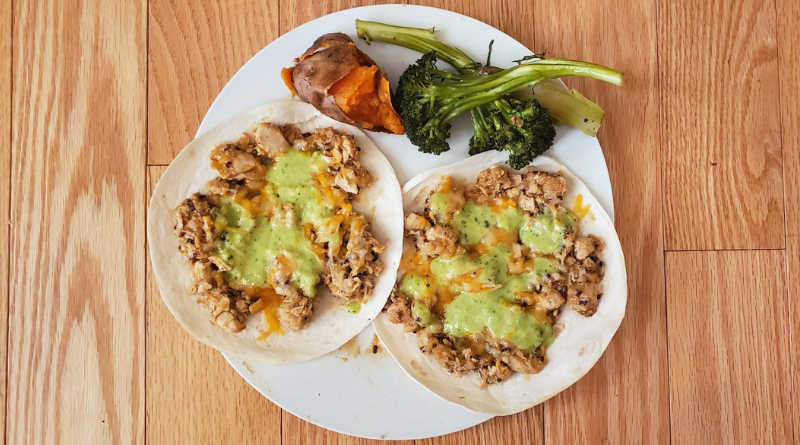Saving money on groceries doesn’t mean sacrificing taste or nutrition. With a little planning, you can create delicious meals that keep your wallet happy. These budget-friendly meal plans are packed with tips and strategies to help you eat well without overspending. By focusing on simple ingredients and smart cooking methods, you’ll be able to stretch your grocery budget further while enjoying a variety of satisfying dishes. Let’s dive into nine practical meal plans that will make saving money easy and delicious.
Cheap Meal Plans That Save on Groceries
1. One-Pot Wonders
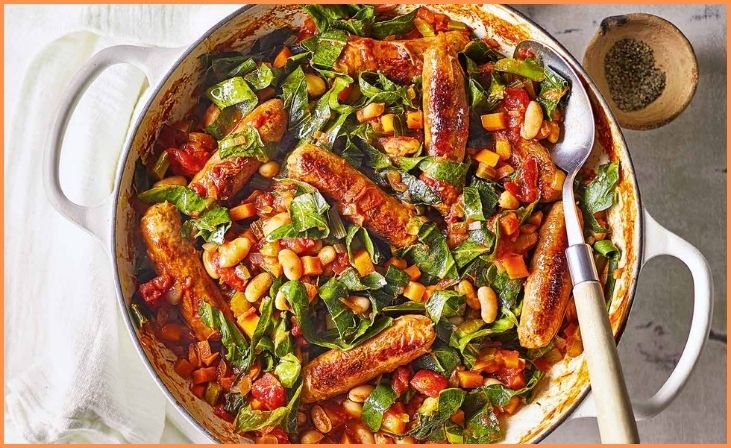
One-pot meals are a fantastic way to save time, energy, and money. These dishes usually require fewer ingredients, less cooking equipment, and shorter preparation times. Not only do they cut down on cleanup, but they also help you make the most of pantry staples and leftovers. For instance, a vegetable and lentil stew is packed with fiber and protein, while a chicken and rice casserole offers a comforting, hearty option. One-pot meals are perfect for busy weeknights or meal prep sessions.
Examples:
- Vegetable and Lentil Stew: Lentils are a budget-friendly protein option, and you can use whatever vegetables you have on hand. Add some spices like cumin or paprika to enhance the flavor.
- Chicken and Rice Casserole: Combine chicken thighs, rice, and seasonings in one pot for a hearty, flavorful meal that’s filling and affordable.
Tip: Cook in bulk and freeze leftovers for future meals. This way, you’ll have ready-to-go options on busy days, saving both time and money.
Also Read- 9 Irresistible Homemade Hot Chocolate Recipe Ideas to Warm Your Soul
2. Meatless Mondays
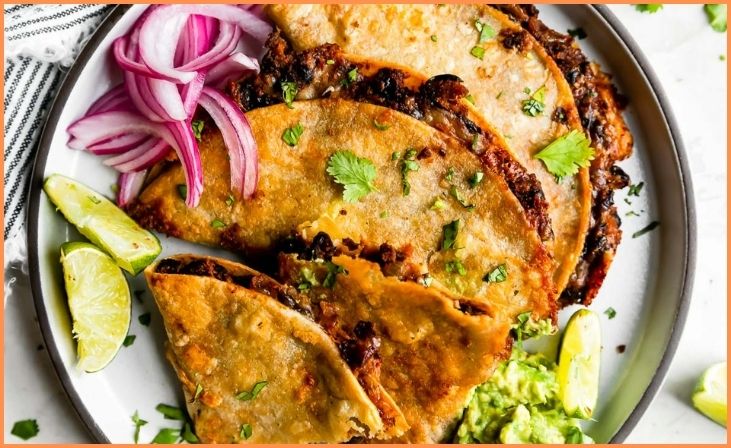
Meat is often one of the priciest items on your grocery list. Going meatless for just one day a week can significantly cut costs and introduce more plant-based nutrition into your diet. Plant-based proteins like beans, lentils, and tofu are affordable, versatile, and packed with nutrients. You can create delicious dishes that don’t feel like you’re missing out. Incorporating more vegetables and grains also helps you maximize your grocery budget while adding variety to your meals.
Examples:
- Black Bean Tacos: Season canned black beans with spices and serve on tortillas with salsa and lettuce for a quick, delicious dinner.
- Vegetable Stir-Fry with Rice: Use a mix of fresh or frozen veggies and soy sauce over rice. Add garlic and ginger for extra flavor.
Tip: Buy beans and grains in bulk to save even more. Cooking your own beans from dried form is a cost-effective and healthy option.
3. Breakfast for Dinner

Breakfast ingredients like eggs, bread, and oats are generally less expensive than typical dinner proteins. Turning breakfast into dinner is a creative way to save money while enjoying comforting and familiar flavors. These meals are often quick to prepare and customizable based on what you have in your pantry. From savory omelets to sweet pancakes, breakfast for dinner offers endless possibilities to please the entire family without breaking the bank.
Examples:
- Vegetable Omelette: Use leftover veggies and eggs to create a filling, protein-packed meal that’s easy to whip up in minutes.
- Pancakes with Fruit: Whip up a batch of pancakes and top with seasonal fruit or a homemade fruit compote for a sweet, satisfying dinner.
Tip: Use powdered or shelf-stable milk in recipes to avoid spoilage and reduce costs. You can also freeze leftover pancakes for quick breakfasts later.
4. Soup and Salad Combos

Soup is one of the most versatile and cost-effective meals you can make. Pairing it with a salad creates a filling, balanced meal that’s perfect for lunch or dinner. Soups are great for using up leftover ingredients, and salads can be customized with whatever vegetables, proteins, or grains you have on hand. This combination is not only nutritious but also ideal for meal prep, as soups and dressings can be made ahead of time.
Examples:
- Tomato Soup and Grilled Cheese: Make soup from canned tomatoes and pair it with a grilled cheese sandwich for a comforting, classic combo.
- Chickpea Salad with Broth-Based Soup: Combine canned chickpeas, chopped veggies, and a simple vinaigrette for the salad. Pair it with a hearty soup to round out the meal.
Tip: Save vegetable scraps to make homemade broth, reducing waste and saving money. Freeze scraps like carrot peels and onion skins until you have enough to make a flavorful stock.
5. Casseroles and Bakes
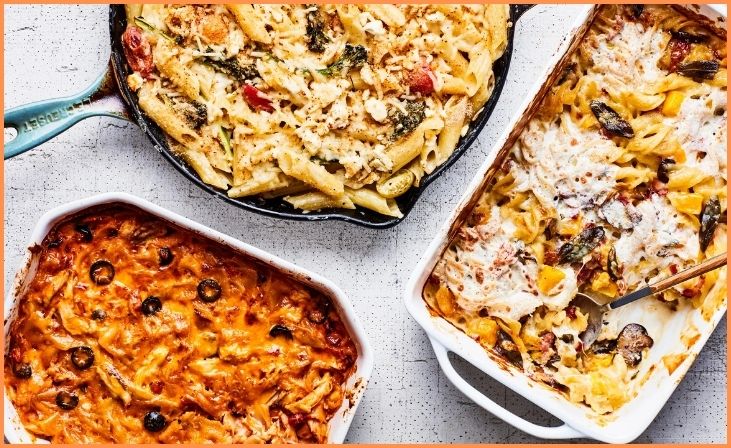
Casseroles are perfect for using up leftovers and feeding a crowd. Most recipes rely on inexpensive pantry staples like pasta, rice, and canned goods, making them a go-to for budget-conscious cooks. They’re also incredibly versatile, allowing you to mix and match ingredients based on what you have available. Casseroles can be prepared in advance and baked when needed, making them a convenient option for busy families.
Examples:
- Tuna Noodle Casserole: Combine canned tuna, noodles, and a creamy sauce, then bake until bubbly and golden on top.
- Shepherd’s Pie: Use ground beef or lentils, frozen vegetables, and mashed potatoes to create a hearty, comforting dish.
Tip: Add breadcrumbs or shredded cheese on top to create a crunchy, satisfying texture. This simple addition can elevate the dish without adding much cost.
6. DIY Takeout

Skip the expensive delivery fees and make your favorite takeout meals at home for a fraction of the cost. Recreating these dishes not only saves money but also allows you to control the ingredients and portion sizes. With some basic pantry staples and a little practice, you can master homemade versions of popular dishes like pizza and stir-fries. This is a fun way to bring restaurant-style dining to your kitchen without overspending.
Examples:
- Homemade Pizza: Use store-bought dough or make your own and top with cheese, veggies, and leftovers like cooked chicken or sausage.
- Stir-Fry Night: Use a mix of vegetables, rice, and a simple sauce made from soy sauce, garlic, and ginger. Add tofu or chicken if desired.
Tip: Stock up on pantry essentials like soy sauce, flour, and oil to recreate takeout flavors at home. These staples often last a long time, making them a great investment.
7. Freezer-Friendly Meals
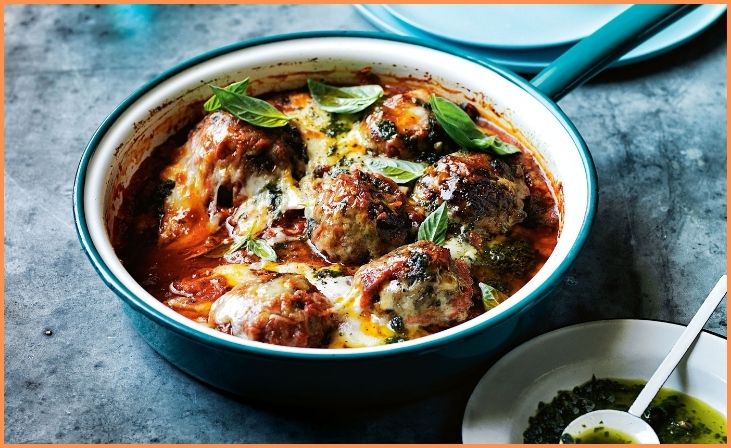
Cooking meals that freeze well is a great way to save time and money. By doubling recipes and freezing half, you’ll always have a meal ready to go, reducing the temptation to eat out. Freezer-friendly meals are perfect for busy weeks when you don’t have time to cook from scratch. They also help you take advantage of sales by allowing you to stockpile ingredients and cook in bulk.
Examples:
- Chili: Use beans, ground beef (or turkey), and canned tomatoes to create a hearty meal that freezes well.
- Stuffed Bell Peppers: Fill bell peppers with rice, beans, and seasoning before freezing. Reheat them in the oven for an easy dinner.
Tip: Label your freezer meals with the name and date to keep track of what you have. This ensures you use older meals first and minimize waste.
8. Pasta Night
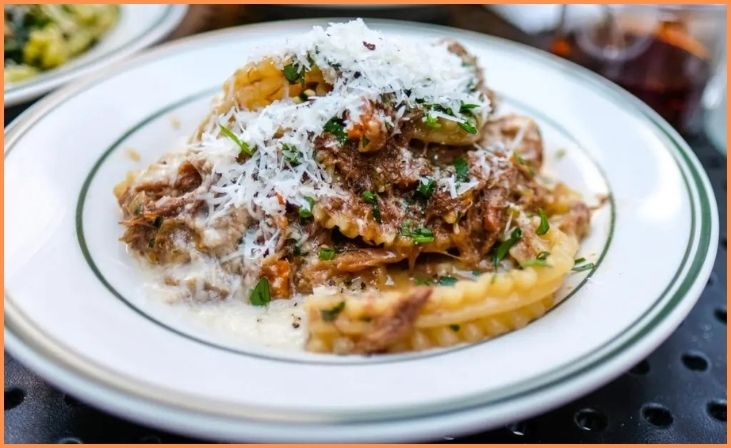
Pasta is one of the most affordable ingredients and can be dressed up in endless ways. With just a few pantry staples, you can create restaurant-quality meals at home. Pasta dishes are quick to prepare, making them a great option for busy weeknights. They’re also highly versatile, allowing you to experiment with different sauces, proteins, and vegetables based on your preferences and what’s in your fridge.
Examples:
- Spaghetti Aglio e Olio: Use garlic, olive oil, and red pepper flakes for a simple, flavorful dish that’s ready in minutes.
- Baked Ziti: Combine pasta, marinara sauce, and cheese for a hearty baked dish that’s perfect for feeding a crowd.
Tip: Buy pasta in bulk or during sales to save even more. Whole wheat or legume-based pasta can add extra nutrition.
9. Seasonal and Local Ingredients
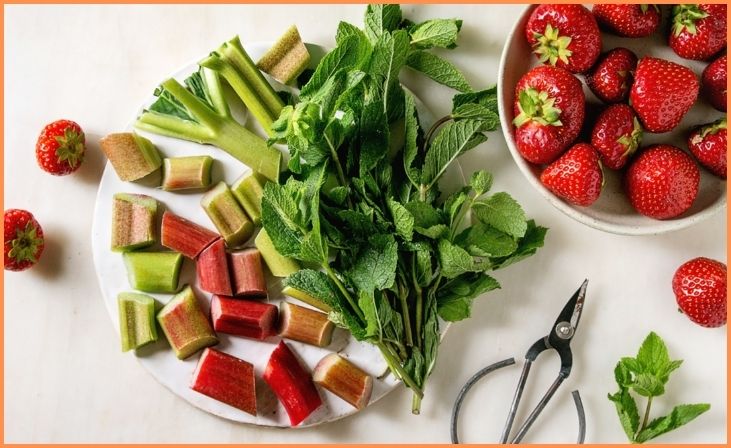
Buying produce that is in season is not only cheaper but also fresher and more flavorful. Supporting local farmers’ markets can also lead to savings and better-quality ingredients. Seasonal eating encourages variety in your diet and helps you make the most of what’s available in your area. Whether you’re roasting root vegetables or making a fresh salad, seasonal ingredients elevate your meals while keeping costs down.
Examples:
- Seasonal Vegetable Stir-Fry: Use what’s fresh and affordable in your area. Add a simple sauce to bring it all together.
- Roasted Root Vegetables: Carrots, potatoes, and onions are typically inexpensive and versatile. Roast them with olive oil and herbs for a delicious side dish.
Tip: Preserve seasonal produce by freezing or canning for use throughout the year. This extends their shelf life and maximizes your savings.
For More- 8 Game Day Recipes to Score Big with Your Guests
Extra Tips for Saving Big on Groceries
- Plan Your Meals: Create a weekly menu and grocery list to avoid impulse purchases. Planning helps you stay focused and prevents overspending.
- Shop Sales and Use Coupons: Take advantage of store discounts and loyalty programs to stretch your budget further. Check weekly ads for deals.
- Embrace Store Brands: Generic brands often cost less and taste just as good as name brands. Don’t be afraid to try them out.
- Minimize Food Waste: Repurpose leftovers into new meals, like using roasted chicken for sandwiches or soups. This reduces waste and saves money.
- Cook in Bulk: Prepare large batches of food and portion them for the week. This saves time and ensures you always have meals ready to enjoy.
Final Thoughts
With some creativity and thoughtful planning, eating well on a budget is completely achievable. These nine meal plans can help you save big on groceries while enjoying delicious, homemade dishes. By focusing on affordable ingredients, reducing waste, and cooking at home, you’ll not only cut costs but also improve the quality of your meals. Start small, experiment with new recipes, and watch your grocery bill shrink. With these tips, you can eat well, save money, and enjoy the process of cooking more than ever before.
FAQs
By planning meals ahead and shopping with a grocery list, you can save up to 30% or more on your grocery bill. Savings depend on factors like the size of your household and your shopping habits.
Yes! The meal plans can be easily adjusted for any household size. Simply scale the recipes up or down to meet your needs.
Absolutely. Many of the meal ideas can be modified for special diets like vegetarian, vegan, gluten-free, or low-carb. Substitute ingredients as needed to suit your preferences or restrictions.
To avoid waste, plan meals around items you already have at home, buy only what you need, and use leftovers creatively in new recipes. Proper storage of perishable items also helps extend their shelf life.

